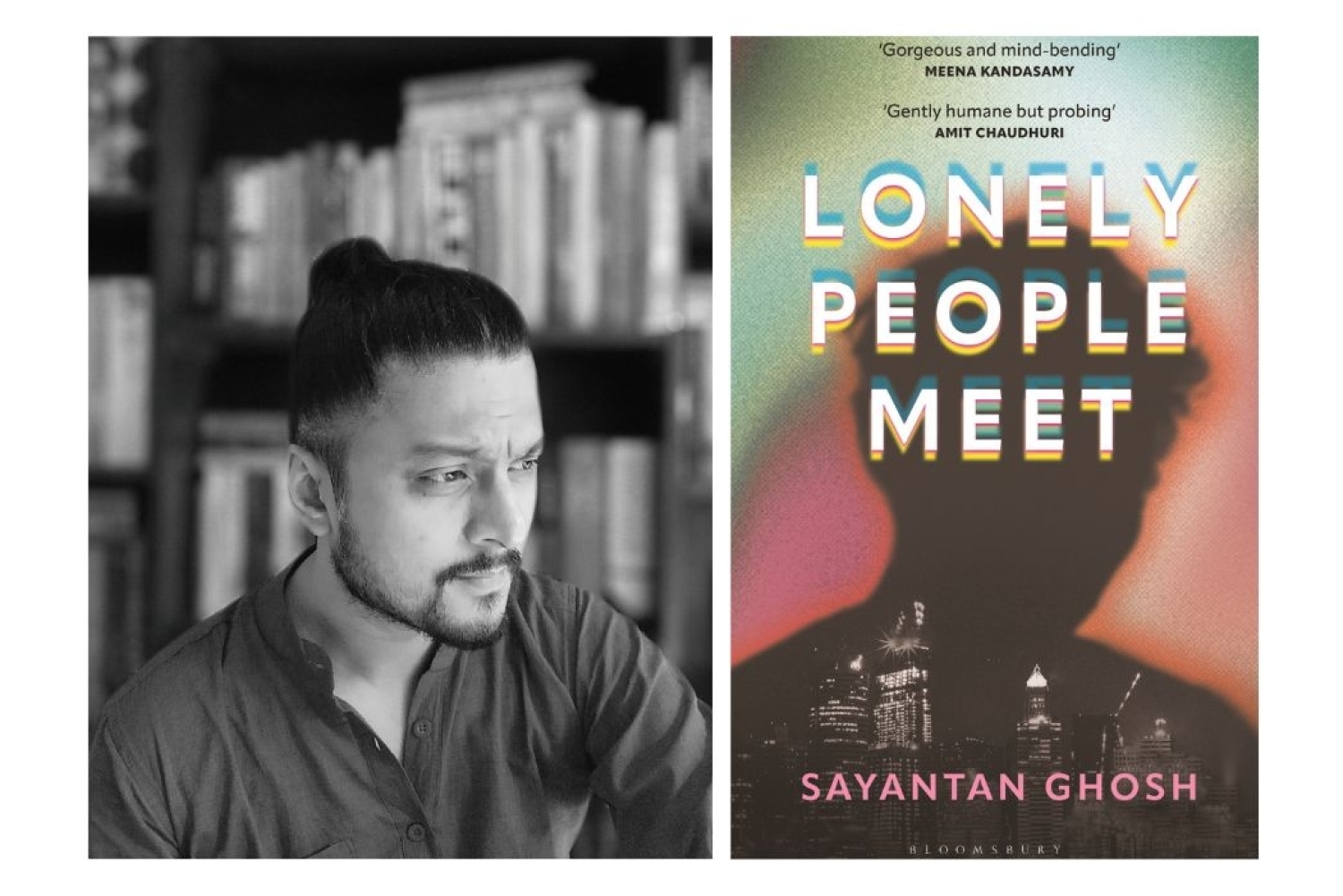

Lonely People Meet seeks to ask many questions about love, and the choices we make for it. The plot follows Karno, an aspiring young novelist and Devaki, both of whom begin to fall in love on the streets of Delhi, as many of us do. Their days carry stolen moments, a certain quiet intimacy, and transforms into a full-blown romance. However, not everything is as it seems—one day, a cryptic organization arrives at his door and reveals Devaki is not who she seems, and Karno’s life goes haywire. This leads to an investigation of shadowy worlds, rewritten pasts and fabricated lives. We’re in conversation with Sayantan Ghosh, the author, about the creation of his debut novel.
Initial Inspirations
Ever since the late 1990s, when computers entered the life of most Indians, I’ve had trouble keeping up with new technologies. And the specific type of loneliness one can only feel under the dazzling lights of big cities, which can potentially swallow people whole, is something I acutely experienced for the first time in 2013 when I moved to Delhi in search of a career. These two thoughts came together when I started writing this novel, and became what now is Lonely People Meet. And blending a love story with a mystery at its core was a more obvious choice, because isn’t love the greatest mystery of all time?
Delhi As The Setting
Delhi’s topography is a surreal mix of ancient history and modernization. A Porsche parked in front of a 15th century gumbad, a couple recording reels outside a majestic tomb, you’re drinking matcha and reading Murakami while strolling in a 16th century Mughal garden. Delhi’s uniqueness lies in its dichotomy. This fusing of the past and the future is also an integral theme of the novel, and Delhi became the natural choice for the setting. Delhi is both my birdsong and alarm call at once.
The Protagonist
There are shades of me in Karno, but his life and experiences are a lot different from my own. The only major similarity perhaps is how lost he feels in the general hubbub of a giant metropolis like Delhi. Every pot has a lid, and sometimes Delhi is too large a pot for lids like us.
Literary Influences
Too many to count, no artistic work is created in a vacuum. Innumerable books, poems, films, songs, paintings, photographs, and sculptures have inspired and influenced both me and this novel. The works of Philip K. Dick, James Baldwin, Teju Cole, Kazuo Ishiguro, Joan Didion, Annie Ernaux, Mary Oliver, Jim Jarmusch, Sofia Coppola, Edward Hopper, Saul Leiter, Auguste Rodin, and Bob Dylan, to name a few.
Relationship with Writing
There’s a beautiful line in Spike Jonze’s film Her (2013) – “We are only here briefly, and in this moment I want to allow myself joy.” Writing is how I allow myself both pain and joy.
Takeaways
Oh, I don’t wish to achieve anything monumental with this novel! All I hope is for people to give this book a chance and read it. If days or weeks later, during a brief moment of doubt or melancholia, a reader remembers it and realizes they’re not the only one feeling this way, I'll feel I have done my job.
Challenges
Like most writers, I too have a day job. Ensuring that the mind is functional after a workday for nearly two years perhaps was the only significant challenge. This can be called a nocturnal novel, since I mostly wrote it at night. Also, I’m a great fan of slowness. I had to make sure that I write every day, even on a bad day, so I don’t end up spending a decade writing just one novel. A flash of inspiration can make you start writing a novel, but only discipline can make you finish it.
What’s Next
I have an idea simmering in my head for some time now, a speculative horror novel set in the Sundarbans. I’m planning to start writing it next year, if the world hasn’t imploded by then.
This interview is from the October EZ. Read the EZ here.
Words Neeraja Srinivasan
Date 23-10-2025